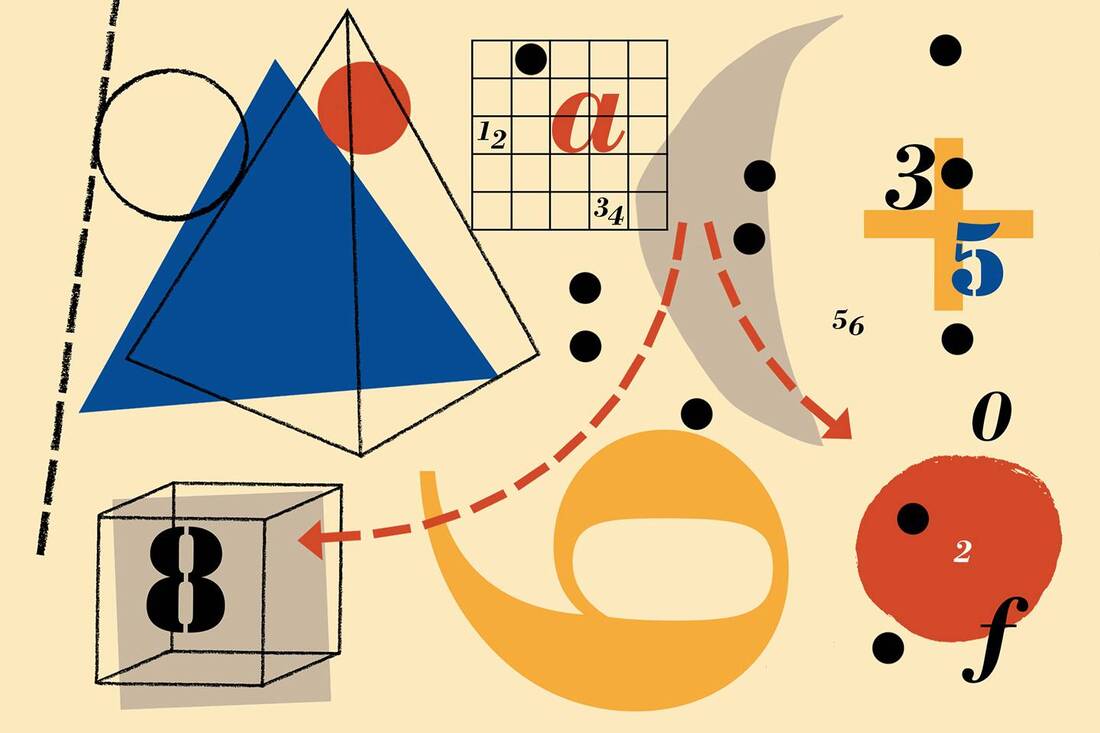|
By Eleanor Lin Pick a number, any number. Now ask yourself: How "round," or easy to work with, is that number? Could you add, subtract, multiply, and divide it relatively painlessly, and all in your head? Without missing a beat, many people would identify numbers like 20 or 100 as "round," and numbers like 23 or 79 as less so. Why? Both 20 and 100 are multiples of 10. Indeed, one of the oft-cited advantages of the metric system is its reliance on base-10 units. There are 1000 milliliters in a liter, 100 centimeters in a meter, 1000 grams in a kilogram, and so on. With unit conversions relying on nice, round multiples of 10, the metric system feels more natural to work with than the U.S. customary system, where one must remember, for instance, that there are 5280 feet in a mile, or 8 fluid ounces in a cup. However, simply saying that multiples of 10 are easier to work with and leaving it at that misses out on the fundamental qualities of the modern-day decimal numbering system that make base-10 numbers seem so neat. Reading numbers like 2021 as "two thousand twenty one" is such a fundamental skill that it seems automatic—no math needed. In fact, what's going on behind the scenes is a little more complicated. The actual math of interpreting 2021 is: 2021 = 1 x 10⁰ + 2 x 10¹ + 0 x 10² + 2 x 10³ = 1 + 20 + 0 + 2000 = 2021 The crux of the matter is that in a base-10 or "decimal" positional numbering system, each digit in a number is multiplied by a power of ten. The position of each digit determines which power of ten it will be multiplied by. For instance, the digit in the rightmost "ones place" gets multiplied by 10⁰, while the digit in the "tens place" gets multiplied by 10¹—and so on, with the power of 10 increasing by one each time a digit moves to the left by one. Thus, 100 seems "round" because it can be easily expressed as: 100 = 0 x 10⁰ + 0 x 10¹ + 1 x 10² = 10² = 100 Notice that there are no extra 10⁰ ("ones"), or even any 10¹ ("tens"), terms lying around, lending the impression that 100 is a "nice, round number." In other words, the idea of a number's "roundness" is entirely a result of the way the base-10 system is built. While base-10 works well for most day-to-day arithmetic, there are some situations where different bases are more appropriate. Instead of the decimal digits 0 through 9, computers store information in binary digits ("bits") 0 and 1, where each digit is multiplied by some power of 2. For example, 32 expressed in binary would be: 1 x 2⁵ = 100000 While 32 may not seem "round" in base-10, it fits nicely into binary, showing that the perception of a number's "roundness" really does depend on the numbering system one is accustomed to. So how did we arrive at base-10 in the first place? To see the answer, just ask any five-year-old to calculate 5 + 3, and watch them count out the result on their fingers. That's right—the origins of the base-10 numbering system could trace back to something as simple as the fact that humans have 10 fingers on their hands. It's no coincidence, as I recently learned in my introductory computer science course, that the word "digit" comes from the Latin word digitus, meaning "toe" or "finger." Complicating this view is the base-12 (duodecimal) system, which seems to arise from an alternate finger-counting scheme that arose in the Middle East and South and Southeast Asia. Excluding the thumbs leaves four fingers per hand to act as counters—and 4 is a factor of 12. Since 12 is a factor of 60, the base-12 system is a close relative to the base-60 system. The ancient Babylonians used a base-60 (sexagesimal) system to do their math, demonstrating that alternatives to base-10 are far from novel. Rather, some of the earliest and most sophisticated math was done without base-10. Part of the Babylonians' legacy is that, to this day, there are 360 degrees in a circle, 60 seconds in a minute, and 60 minutes in an hour. There are modern-day advocates for switching to the duodecimal system. They cite 12’s conveniently abundant factors (2, 3, 4, and 6) compared to 10 (2 and 5), making fractions in base-12 less of a pain to express than in base-10. For instance, 1/3 in base-10 is the infinitely repeating decimal: 0.33333 . . . whereas in base-12, 1/3 would simply be 0.4, since: 0.4 (base-12) = 4 x 12⁻¹ = 4/12 = 1/3 = 0.3333 . . . (base-10) However, given the base-10–dominated world we live in, it is tricky for most people to think in base-60, so "0.4" may not be so objectively neat after all, highlighting the influence ingrained habit has on what is perceived as convenient. As science writer Evelyn Lamb has reflected on her experiences teaching base-60 Babylonian math: "I told my students that the theme of the week was 'easy algebra is hard in base 60,' but that's not the real takeaway. The base isn't what makes calculations in base 60 difficult, it's the fact that [the] mathematical culture of the people who made it is so different from ours. A more accurate slogan would be 'easy algebra is hard 4,000 years later with a completely different view of mathematics,' but it's not quite as snappy." Who knows? Perhaps, if we're still around in another 4,000 years, humans will have come up with something better, and base-10 will be a curious artifact of the past.
0 Comments
Leave a Reply. |
Categories
All
Archives
April 2024
|

